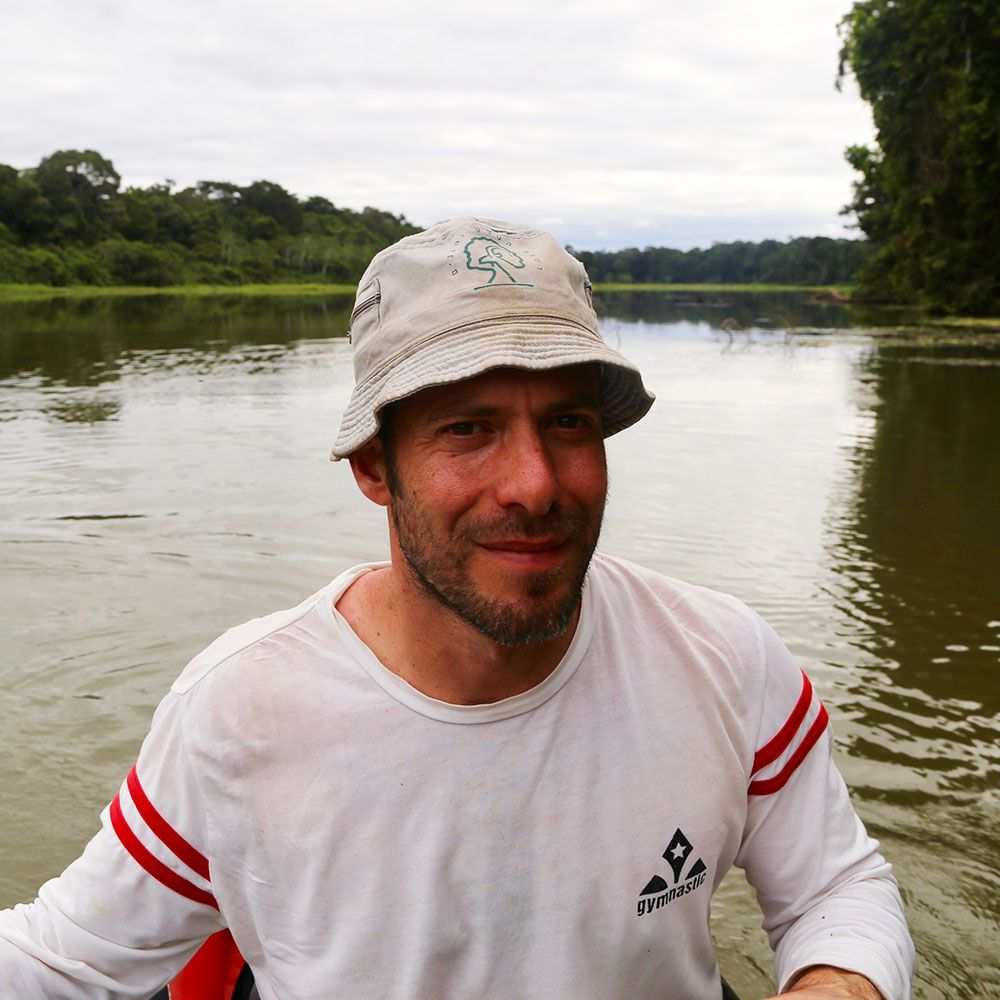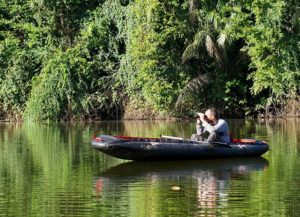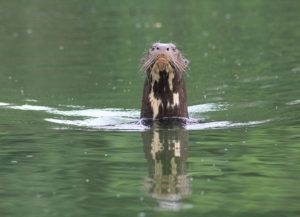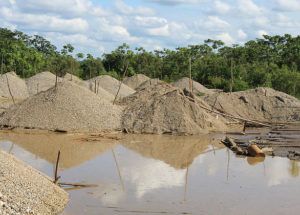Giant otters
Partner profile

Funding for this project has now finished
Scientist: Dr Adi Barocas
Nationality: Israeli
Organisation: San Diego Zoo’s Institute for Conservation Research, WILDCRU (University of Oxford)
How PTES has helped me so far: Funding from PTES has helped us purchase valuable items for field work, such as the inflatable rubber boats used to study otters inside oxbow lakes. It was also instrumental in setting up the project’s human dimension team, that promotes environmental education in gold mining communities.

My journey
I started studying wildlife as a biology undergraduate student in Tel-Aviv University. I since have studied kestrels, rock hyraxes, river otters, wolves and foxes. I have always been attracted to projects with a strong field component.

Why I love giant otters
I think otters in general are beautiful and charismatic. I am impressed by how they have adapted to living in water and feeding on fish. I particularly enjoy observing giant otters because they are social animals that have complex interactions with each other.

My goal
The project aims to understand if and how gold mining affects giant otter populations and the aquatic ecosystems they depend on. Using the evidence collected, I will secure the conservation of giant otters and their habitat.

What your donations achieved
1 Over five years, Adi and his team followed 15 giant otter groups. They discovered otters living in lakes in protected areas with higher fish abundance, foraged more efficiently and so spent less time looking for food.
2 Adi’s team showed that lakes in areas with gold-mining had lower fish numbers, polluted water and degraded bank habitats.
3 Adi’s work showed otters can survive in degraded and lower-quality habitats such as old mining ponds and those lakes with lower fish abundance. If these areas are restored, both fish and otter numbers can bounce back.
Thank you to all our donors who helped us fund this work. You can help us support more projects like this with a donation today:
